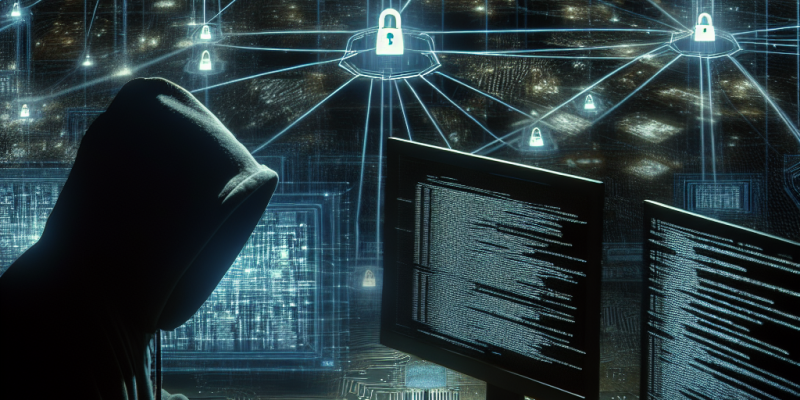Exploring the Dark Web: The Underbelly of Cybercrime

Exploring the Dark Web: The Underbelly of Cybercrime
The internet as we know it is just the tip of the technological iceberg. While the World Wide Web, comprising websites like Google, Facebook, and Wikipedia, is easily accessible and user-friendly, lurking beneath this familiar surface is a shadowy realm known as the dark web. The dark web represents a small segment of the deep web—parts of the internet not indexed by traditional search engines—where anonymity reigns, and illicit activities flourish. This article delves into the murky waters of the dark web, exploring its characteristics, the motivations behind its development, and the cybercriminal activities that thrive within this hidden environment.
What is the Dark Web?
The dark web is often defined as the encrypted part of the internet that requires special software, configurations, or authorization to access. The most common means of accessing the dark web is via Tor (The Onion Router), a network that anonymizes users by routing their internet traffic through a series of volunteer-operated servers. This technology provides a level of security and privacy that has become increasingly valuable in a world where online surveillance is the norm.
Unlike the surface web—where any user can navigate and gather information—the dark web requires specific knowledge and tools. Despite its nefarious reputation, it hosts a variety of forums, marketplaces, and communication platforms. Some of these are perfectly legal and provide safe spaces for whistleblowers, journalists, and users in repressive regimes, while others serve as a breeding ground for cybercrime.
The Allure of Anonymity
The anonymity that the dark web provides has attracted a wide range of users, from those seeking privacy to cybercriminals engaged in illegal activities. Individuals who feel vulnerable online use the dark web as a sanctuary to share opinions, criticize governments, or seek refuge from persecution. However, this veil of anonymity also lays the groundwork for darker intentions.
Many individuals turn to the dark web not just to access information or services, but to commit crimes with relative impunity. The principle of anonymity is dual-edged; while it protects the identity of the whistleblower or oppressed individual, it equally serves the interests of cybercriminals who engage in trafficking, hacking, money laundering, and other types of misconduct.
Cybercrime on the Dark Web
-
Illegal Marketplaces: Perhaps the most notorious aspect of the dark web is its online marketplaces, which resemble e-commerce sites but specialize in illegal goods and services. These platforms function similarly to eBay but deal in drugs, counterfeit currency, stolen data, and weapons. While some marketplaces have seen shutdowns by law enforcement—such as Silk Road and AlphaBay—new ones continually emerge, adapting to security measures and law enforcement crackdowns.
-
Hacking Services: The dark web also hosts a plethora of hacking services for hire. Cybercriminals can offer their skills for data breaches, website takedowns, or exploitation of software vulnerabilities. This black market for hacking services often includes forums where buyers and sellers can discuss prices, services, and success rates.
-
Identity Theft and Fraud: Personal information is a hot commodity on the dark web. Cybercriminals specialize in obtaining and selling stolen identities, credit card information, and personal records. This information can be used for various scams, with victims often unaware that their data has been compromised.
- Digital Weapons and Explosives: While more rare, some dark web vendors sell digital weapons, or malicious software, which can be used for cyberattacks against corporations or government institutions. Some even delve into the sale of physical weapons and explosives, further escalating the risks associated with these clandestine marketplaces.
Law Enforcement Challenges
The very characteristics that make the dark web appealing also pose significant challenges for law enforcement agencies. Traditional methods of investigation are often ineffective against the layers of anonymity provided by Tor and similar technologies. Nevertheless, multinational law enforcement collaboratives, such as Europol’s “Operation Dark Market,” have made significant strides in infiltrating and dismantling dark web operations.
Lasting change in the dark web’s cybercrime culture may require not only stringent law enforcement action but also international cooperation and preventive measures aimed at educating potential users about the risks of engaging in illicit online activities.
The Future of the Dark Web
As technology evolves, so too will the dark web and the motivations driving its users. While cybersecurity measures improve and law enforcement agencies become more adept at tackling cybercrime, creative individuals continue to find loopholes and opportunities for illegal activities. The dark web embodies both the potential for private communication and expression and the dangers associated with unchecked anonymity in the digital landscape.
In conclusion, the dark web remains a complicated, multifaceted environment. Though it harbors a wealth of illegal activities, it also serves critical functions for those in need of privacy and protection. Striking a balance between safeguarding individual freedoms and curbing cybercrime will be one of the defining challenges of the digital age. As we continue to explore the dark web’s darker aspects, it is imperative to stay informed and aware of its complexities in our ever-evolving digital world.














